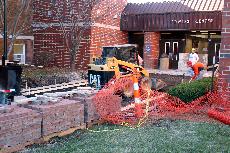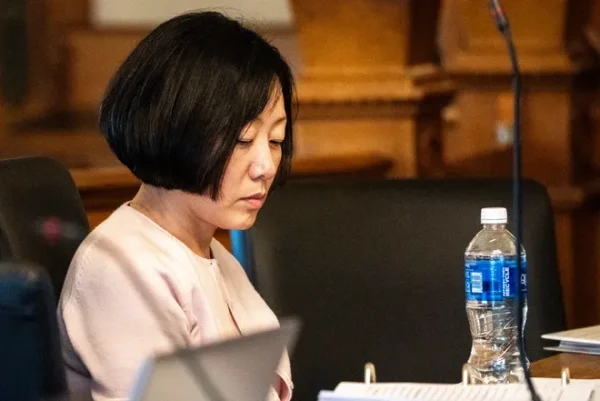Steam pipe repairs a sure sign of winter

December 10, 2009
At Simpson College, sometimes the first sign of winter isn’t the snow or the frost, but the steam bubbling from under the sidewalks. As crews work to fix broken heating pipes, Simpson officials say they are hopeful the number of needed repairs will decrease in coming years.
The school is using stronger pipes in their repairs to help stave off future problems.
“The original system used schedule 40 pipe instead of schedule 80, which we use exclusively now,” Jeremy Huffman, director of Campus Services, said.
“When you fix one steam leak, the pressure that was escaping at the original leak is increased, because it’s no longer leaking, and this causes the other weak spots in the system to show their leaks as the pressure builds.”
According to Huffman, this problem should not be persistent as it has been in the past.
“The steam leaks should be reducing in number this winter and in future winters as the shelf life of schedule 80 pipe is roughly twice that of schedule 40,” he said. “Since we are replacing most of the pipe now, it should not be a problem later on,”
The new schedule 80 pipes have a shelf life of up to 15 years.
“The pipe, which carries the steam underground, simply corrodes to the point where it is brittle and eventually fails, resulting in a leak,” Huffman said.
Safety is another reason for the pipe maintenance. Students can acquire major burns and irritations that can lead to serious injuries.
“It is a both a safety and efficiency problem,” Huffman said. “Safety because as you can see when there is a leak, it is often shooting steam out of the ground at temperatures high enough to burn students or faculty.”
The leaks also result in wasted energy.
“It is an efficiency issue because any steam we lose, due to a leak, is wasted energy as it is steam that has been heated to heat the campus, but is escaping in to the air,” Huffman said.
Repairs to a leaking pipe in front of Cowles Fieldhouse lasted several weeks from mid-November into December. Huffman and his crew first removed all the cement and brick in which steamy flows had been noticed.
After digging out a four-foot deep pit and replacing the corroded pipe, new cement was laid and the main entrance to Cowles was reopened.
The time-consuming task of making such repairs can be a hassle to those trying to navigate their way around the construction.
Sophomore Jesse Van De Krol remembers last year when the pipes were leaking outside of Carver Science Center.
“The biggest headache was the construction congesting everything, and the stench also added to it,” Van De Krol said.
This year, however, freshman football player Grant Focht said he is thankful that it did not happen during the football season.
“I’m glad it happened now than earlier,” Focht said. “I don’t usually go through Cowles now that we are out-of-season, but one thing I can recall is the stink that came with it.”












